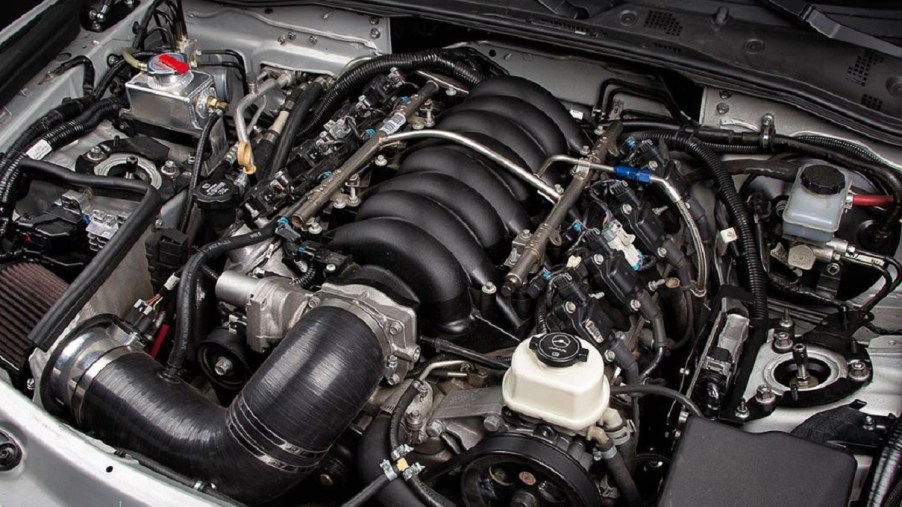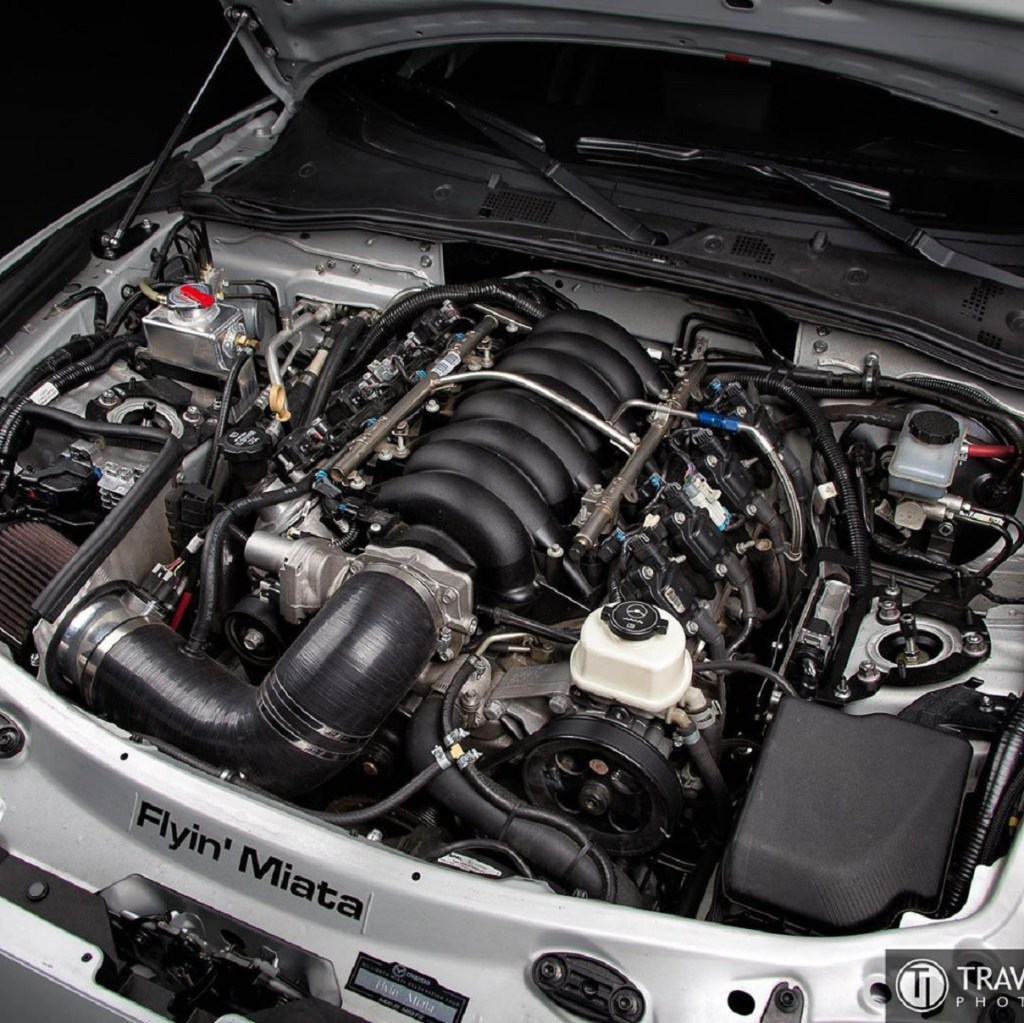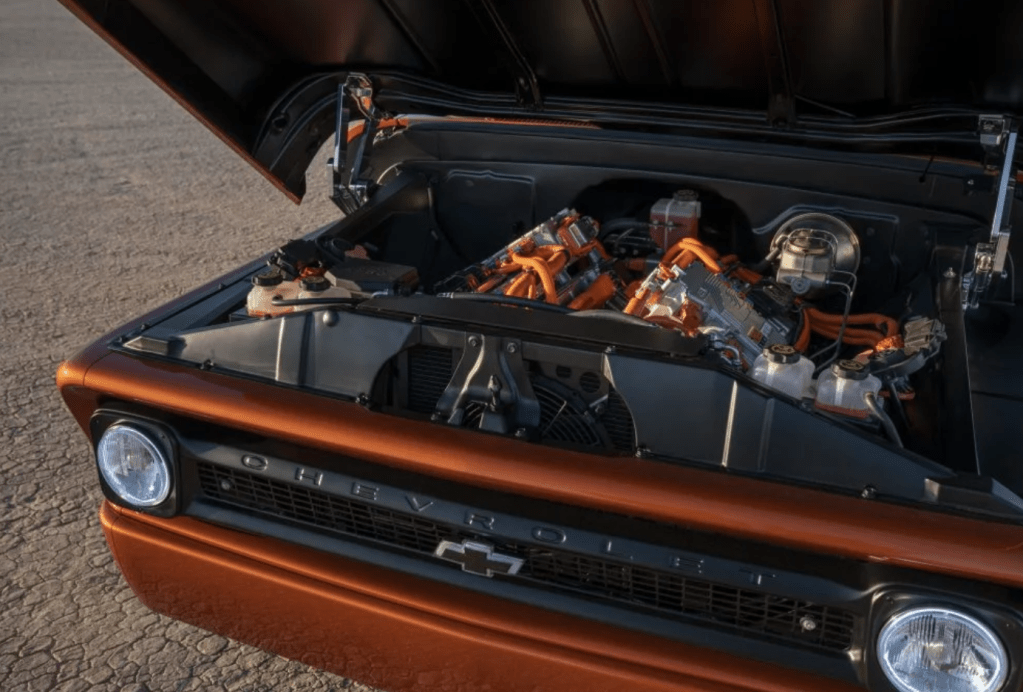
How Easy Is It to Do an Engine Swap?
When it comes to improving your engine’s performance, cold-air intakes and headers can help a little. Going further with the modifications, you can tune the ECU, or install stronger internal components. But there’s another way to transform your car’s performance: an engine swap.
What goes into an engine swap?

An engine swap is both as simple and not as simple as it sounds. At its core, it is just about replacing a car’s original motor with a different one. However, as engine swaps have risen in prominence and popularity, they’ve also gotten more complicated.

Firstly, it’s now possible to swap out a gasoline or diesel engine for an electric motor. Several companies, including Yamaha, are even developing modular ‘crate’ motors for this purpose. But even if you’re just exchanging one gasoline engine for another, it’s not quite as easy as undoing a few screws.
For one, that new engine needs radiators, air intakes, exhaust pipes, and so on. Plus, depending on the kind of engine swap you’re doing, it may require its own transmission. Then there’s the little issue of figuring out how all these parts bolt into your existing car.
Also, modern powertrains have many interconnected electrical components. And not simply the ECU and the O2 sensor. As Road & Track describes Flyin’ Miata’s V8 ND Miata, “The headlights chat with the steering rack. The windshield wipers talk to the driveline. The fuel gauge relies on calculated [sic] fuel economy to project an accurate tank level. It’s a delicate structure, and pulling one piece can crash the whole system.”
Even the Colorado-based tuning shop’s previous V8-swapped Miatas required a bit of additional modification, R&T reports. For example, the conversion required putting in the power steering pump from a Cadillac CTS-V, and reinforcing the frame. And the Miata’s relatively small engine bay meant a few components had to be relocated or resized. Such as the washer bottle, which in FM’s case, is from the Suzuki Cappuccino kei car.
But why would someone go through all this effort?
Why would you do an engine swap?
The usual answer is performance.
The FM V8 Miata uses a 6.2-liter GM LS V8 based on the Camaro’s engine, Car and Driver reports. Normally, the sports car comes with a 2.0-liter four-cylinder. Power and torque, therefore, jump from 181 hp and 151 lb-ft to 525 hp and 486 lb-ft. And the weight only increases by 237 pounds, Automobile reports.
The result is arguably the closest thing to a modern, non-kit-car Shelby Cobra. 0-60 comes in 3.5 seconds, faster than the outgoing C7 Corvette Gran Sport. As one Mazda PR person told R&T, “’ Officially, the stock car has more than enough power…[w]e can’t endorse this. But unofficially . . . God, I love this thing so much.’”
And the Miata isn’t the only car to benefit from an engine swap. Mini Coopers are also a popular engine swap target. Owners have fitted them with everything from Honda four-cylinders to twin-turbo V8s to motorcycle engines. The same goes for the Honda N600.

Plus, an engine swap can do more than just add performance. Worried that your Mazda RX-8’s rotary engine will fail? Swap in an LS V8. Don’t want to deal with your classic car’s carburetors? Give it an electric powertrain.
Can you do it on your own?
With enough dedication, it’s possible to do some rather unconventional engine swaps. For example, drifter Ryan Tuerck swapped a Ferrari 458’s 562-hp 4.5-liter V8 into a Toyota 86. The process, R&T reports, required mounting the engine backward and cutting into the windshield frame. And that was just to get the V8 to fit.
There are a few companies that provide engine swap kits to simplify the process. In addition to Flyin’ Miata, there’s also KMiata, which specializes in giving Miata’s Honda K24 engines. Plus, nowadays it’s fairly easy to order a crate engine, like the 1000-hp Hellephant, from an OEM or aftermarket supplier.
However, an engine swap, like a kit-car build, isn’t an easy process. If you need to reinforce the frame, welding may be involved. Removing the old engine and putting in the new one requires an engine hoist.
And if you ask a shop to do it for you, it won’t exactly be cheap. In an interview with The Smoking Tire (video below, possible spicy language), veteran race mechanic Bozi Tatarevic claims the cheapest LS swap he performed cost about $4200. And that’s not including labor.
So, is an engine swap easy? Not really. But if you want more power or more oddball fun, it might be worth the time and money.
Follow more updates from MotorBiscuit on our Facebook page.


